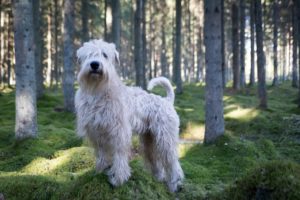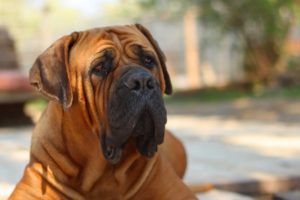5 Extinct Breeds Dog Lovers Should Know About

The title of “Man’s Best Friend” has been one earned by dogs for centuries. Our canine companions have been by our side since the rise of humankind as a friend, ally, and helper. Over the years, we have been able to effectively breed dogs for specific tasks such as guarding, hunting, and companionship. However, with the passage of time, there have been several interesting breeds that aren’t around anymore.
Here are 5 interesting breeds of dogs that no longer exist:
1. The Hare Dog was a domesticated dog and coyote hybrid (also known as a Coydog) that was popular among the Hare Native Americans in Canada. They were a notoriously playful breed with the small slender heads of their coyote cousins and a body to match. Their color pattern was white and grey patches on their back, face, and tail. The Hare Dog’s numbers fell into decline after the invention of firearms made their hunting abilities obsolete. They eventually bred with other pedigrees exhibiting more dominant traits, and theirs became lost in the gene pool.
 2. The Salish Woolly Dog is a distant cousin of the terrier, and was bred specifically for its fur, which could be shorn like a sheep’s to make wool. Since the dog’s real value came from its long white, wool-like coat, it was important to natives in North America to keep the breed separate from other dog populations, coyotes, and wolves. Often the dogs were kept on islands, to ensure their lineage, and fed a steady diet of fish.
2. The Salish Woolly Dog is a distant cousin of the terrier, and was bred specifically for its fur, which could be shorn like a sheep’s to make wool. Since the dog’s real value came from its long white, wool-like coat, it was important to natives in North America to keep the breed separate from other dog populations, coyotes, and wolves. Often the dogs were kept on islands, to ensure their lineage, and fed a steady diet of fish.
3. Switching gears from the new world in America to ancient Greece, the Molossus Dogs would leave a line of great dog breeds throughout history. The most notable of their descendants are the Mastiff, St. Bernard, Great Dane, and Rottweiler. These dogs were big! It is thought that they were larger than any contemporary dog, though the exact aspects regarding size and body are widely disputed. It is agreed their build was large and stocky, though size is disputed considering historical claims about it fighting lions, tigers, and even elephants. Others argue it was a lean and lightweight dog, resembling something closer to a Greyhound or Great Dane. When it comes to a breed that dates back farther than Aristotle and Virgil, there are bound to be discrepancies.
 4. Moving forward through history, a descendent of the Molossus was the Alpine Mastiff. While the Alpine Mastiff is now extinct, we can see their descendants in today’s modern mastiffs. The alpine mastiff was what some called a “bridle dog” implying it was large enough to be ridden like a horse, this is thought to have been said mostly in jest. In the 1800’s the name Mastiff and St. Bernard were used interchangeably and it becomes difficult to pinpoint when the two actually became different breeds.
4. Moving forward through history, a descendent of the Molossus was the Alpine Mastiff. While the Alpine Mastiff is now extinct, we can see their descendants in today’s modern mastiffs. The alpine mastiff was what some called a “bridle dog” implying it was large enough to be ridden like a horse, this is thought to have been said mostly in jest. In the 1800’s the name Mastiff and St. Bernard were used interchangeably and it becomes difficult to pinpoint when the two actually became different breeds.
5. English Water Spaniel went extinct sometime in the early 1900’s but can be dated as far back as Shakespeare’s Macbeth. The little scamp was adept at hunting waterfowl and had similar distinguishing features to a collie. It was said that the dogs were as good at swimming and diving as the birds they hunted. The water spaniel influenced many contemporary breeds, like the modern spaniel and certain retrievers.
Bonus:
The Russian Tracker or Retriever is officially considered to be extinct but there are some in Russia who remain unconvinced. Though this particular breed was never officially recognized by credited kennel clubs, many believe it had a long enough history and the characteristics to apply. Though this clever mountain dog is thought to have been extinct, some speculate that they may still exist in Moscow’s stray dog population, and the dogs that have learned to navigate the subway systems in Russia are thought to be their descendants. The primary trait of this breed, apart from being large enough to chase off big Russian wolves, was their intelligence. As a work dog in Russia’s harsh climate, it was said these dogs could keep large flocks of sheep alive and well for months on their own, without needing people to help them.
Are there any breeds we left out? Let us know in the comments!
